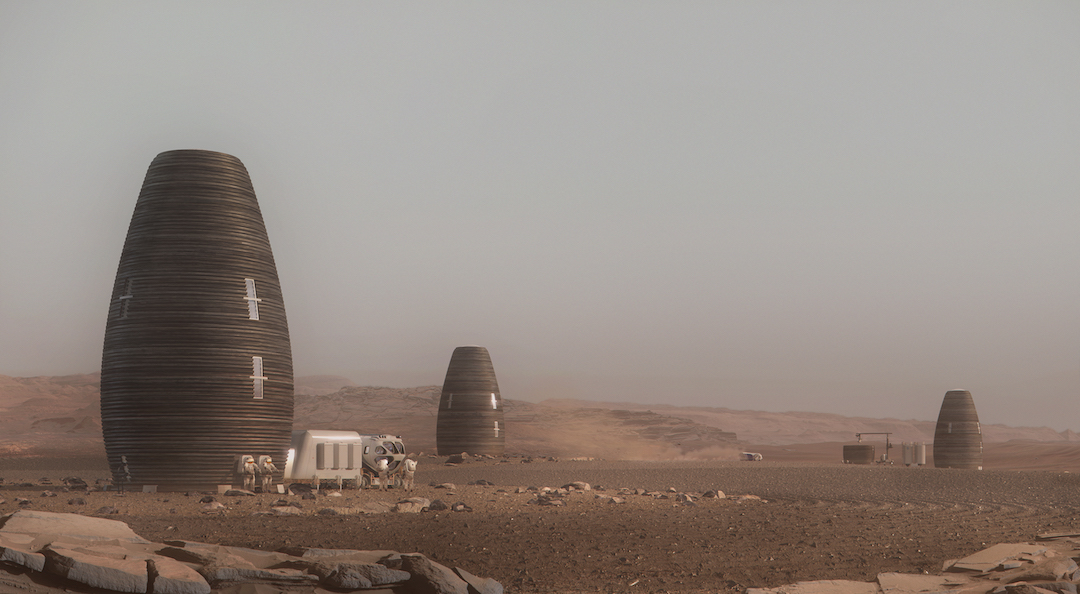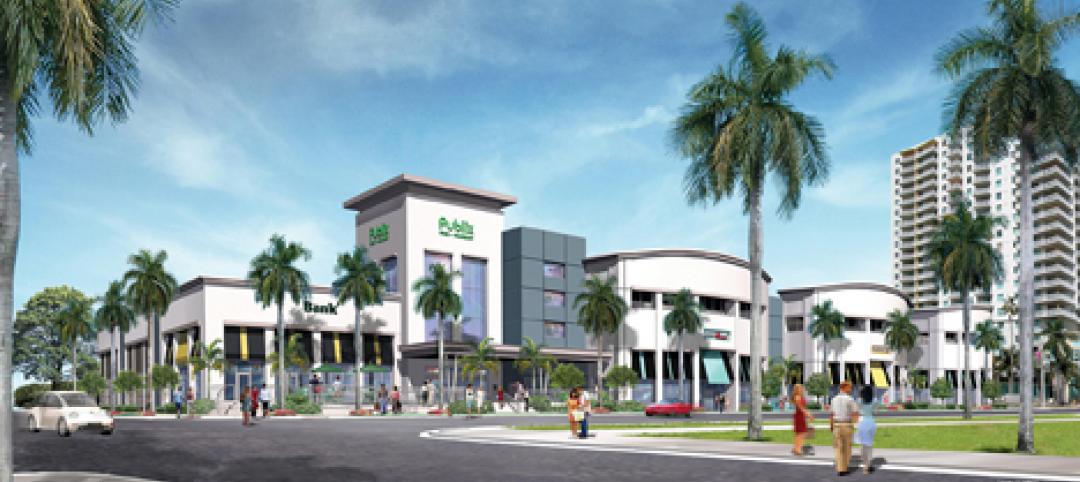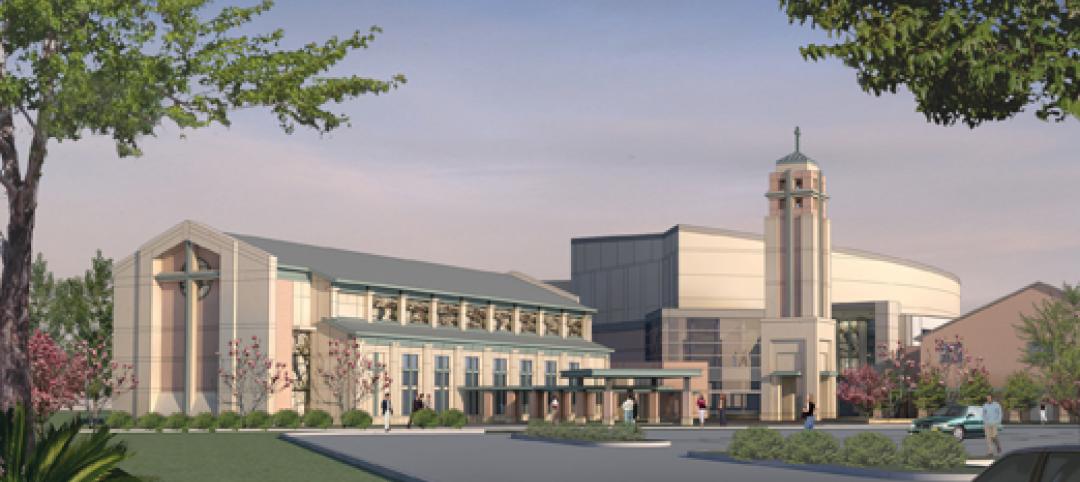“Space travel has again made children of us all.” Though it has been nearly seven decades since Ray Bradbury wrote these words, they have recently taken on new resonance in today’s world. The once chimerical dream of humankind’s outstretched arm reaching toward the red-tinted celestial body of Mars and wrapping its fingers around it has not only become achievable, but achievable in the not too distant future.
But in order to arrive at “One Giant Leap for Mankind: Part II,” it’s going to take a lot of hard work from a collection of brainy, pioneering individuals: rocket scientists and engineers, astronauts and analysts, and, of course, a man in a vest with a killer flattop.
But there is one more important position that is required if humans want to get to Mars: the architect. That’s right, if people want to colonize Mars, they are going to need structures to live and work in on the planet’s surface. Structures that can make the approximately 37 million mile journey (launching heavy payloads from Earth is no easy feat) and then withstand the rigors and challenges associated with day-to-day Martian life once they arrive (if you thought launching these payloads was tough, try landing them).
Challenges like maintaining pressurization, thermal contraction and expansion and, possibly the largest problem of them all, radiation. What complicates these issues even more is the fact that there is no one location on Earth that accurately mimics Mars to carry out structural and material tests.
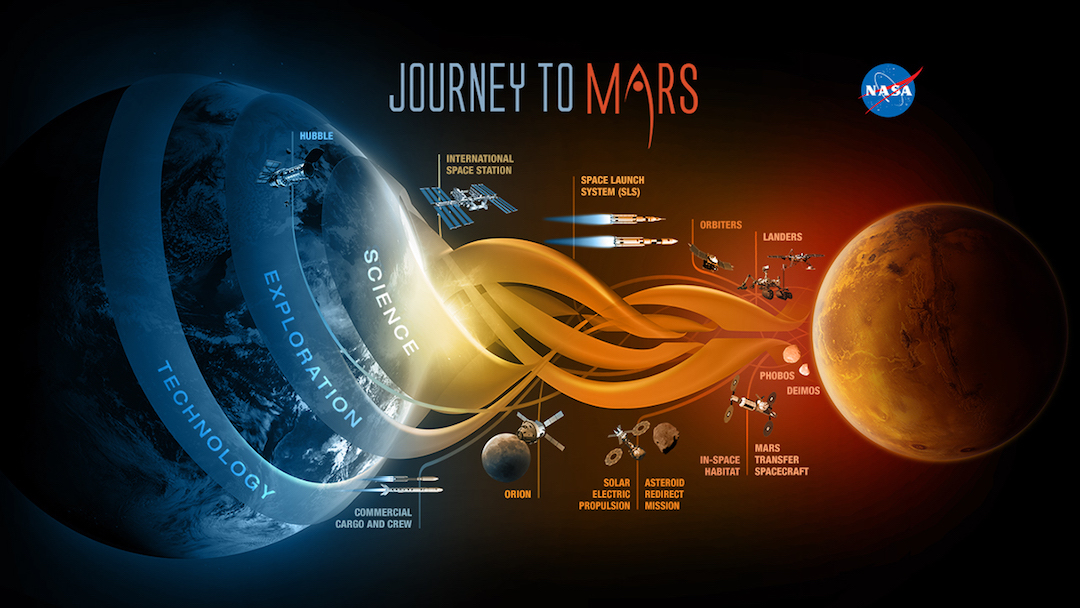 Courtesy NASA.
Courtesy NASA.
“Day temperatures around the Martian equator may be considered similar to Earth and can reach 70 degrees fahrenheit, but drop to a scary -100 degrees fahrenheit during the night, which can only be compared to continental Antarctica,” says Olga Bannova, PhD, Lic. Eng., Director, Sasakawa International Center for Space Architecture (SICSA) at the University of Houston. “The conditions on Mars are also very dry, which can only be compared with the driest parts of the Atacama Desert in Chile.” Additionally, because Mars’ atmosphere is very different from Earth’s in composition, density, and pressure, Martian structures would need to be pressurized, making underwater the best place to carry out these tests. To summarize, researchers would need to combine earth’s coldest and driest locations and then submerge them in water (which would be impossible and counterproductive respectively, if you paid even a little attention in grade school science class) in order to accurately test a Martian habitat here on Earth
 The most detailed map of Mars' gravity to date. The map was derived using Doppler and range tracking data collected by NASA's Deep Space Network from three NASA spacecraft in orbit around Mars: Mars Global Surveyor, Mars Odyssey, and the Mars Reconnaissance Orbiter. Courtesy NASA.
The most detailed map of Mars' gravity to date. The map was derived using Doppler and range tracking data collected by NASA's Deep Space Network from three NASA spacecraft in orbit around Mars: Mars Global Surveyor, Mars Odyssey, and the Mars Reconnaissance Orbiter. Courtesy NASA.
But, thanks to the joys of modern science, many of these environments can be artificially created in labs. That helps solve some of the issues with building and testing would-be Martian habitats here on Earth, but in order for them to truly become Martian habitats, there is that little detail of a 37 million mile trip to take into consideration. And that’s when things get really tricky.
Mars: No Humans Allowed
“The first habitats on Mars are not going to be 3D printed. They are going to be prefabricated and are going to be landed by brute force,” says Jeffrey Montes, Extraplanetary Habitats & Systems Lead, AI SpaceFactory.
Bannova agrees. “Currently everything we may need to sustain habitation on Mars needs to be brought there from Earth,” she says. This means not only will super heavy launch systems be required, but large landers for the structures will also be necessary since parachutes would be ineffective in Mars’ thin atmosphere.
What this also means is setting up these first structures will not be accomplished by Wall-E and a 3D printer, but by good old-fashioned (human) elbow grease. That’s right, astronauts performing manual labor on an alien planet millions of miles from home. Which leads to another problem that needs to be solved: limiting the astronauts’ time in deep space so they are as healthy and productive as possible once arriving at their destination. According to Bannova, this means developing new propulsion systems that can reach Mars faster. A faster trip means the astronauts will be in better physical and psychological condition upon arrival. The healthier the astronauts are, the better chance of success there is to set up and test the first dwellings.
But even if astronauts and all their equipment reach Mars quickly and safely, there is one problem that exists above all others: radiation. When it comes to radiation, there is one acronym NASA, or anyone else hoping to get to Mars, focuses on: ALARA, As Low As Reasonably Achievable.
 A view of the Martian landscape from NASA's Mars Exploration Rover Spirit. Courtesy NASA.
A view of the Martian landscape from NASA's Mars Exploration Rover Spirit. Courtesy NASA.
Mars does not have a protective magnetosphere like Earth. When combined with its thin atmosphere, this means the surface of Mars is regularly exposed to high levels of radiation from solar wind, cosmic rays, and solar flares. Over the course of one year, an astronaut on Mars would be exposed to radiation levels about two and a half times higher than what an astronaut on the International Space Station would experience. It isn’t readily known what prolonged exposure to radiation at these levels would mean for astronauts busy colonizing Mars, but cancer, radiation sickness, or even death could occur.
Not to mention, somewhere between avoiding the cold touch of Death while traveling through deep space and landing safely on an alien planet and trying to dodge cosmic radiation like rain drops, these intrepid explorers will have to find time to set up an uninterrupted mega kilowatt power supply, grow food, and maintain their physical, emotional, and psychological well-being. Other than that, designing and building architecture on Mars should really be a piece of cake. But while that’s quite a laundry list of problems, there are many solutions currently in development that will make the Red Planet a little more hospitable.
In a hole in the ground there lived an astronaut?
Some scientists have suggested the only way to live on Mars and be safely shielded from the radiation and large temperature swings is to live in something resembling a hobbit hole, built underground.
Everyone’s favorite eccentric billionaire, Elon Musk, has floated the idea of using Boring Company (Musk’s infrastructure and tunnel construction company) technology to create not just underground hobbit holes, but entire underground cities on Mars; think of an ant farm, but for humans.
Not everyone agrees we are destined to become a population of mole people if we want to colonize Mars, though. In order to design architecture for long-term living and prosperity, and avoid living underground, there needs to be a shift in mentality “to see the Martian environment not only from a defensive position, but as a place to co-exist, adapt, and even enjoy,” Bannova says. The key to this is to minimize logistics from Earth and maximize the use of in-situ resources for exterior structures. After the first astronauts and their prefabricated structures make their way to Mars, it is absolutely necessary that all subsequent structures be built from materials Mars itself can provide.
Rendering of possible Martian habitat. Courtesy SICSA.
On this front, much work has been done. It seems almost every day a new architecture firm or group of brainy boffins releases details for a novel idea for how to live on Mars. Redhouse Studio, a Cleveland-based architecture firm, along with Lynn Rothschild, a NASA Ames researcher, has proposed fungus as the secret to colonizing Mars. Meanwhile, NASA, as part of its Centennial Challenges Program, has been hosting an ongoing 3D Printed Habitat competition to build a 3D printed habitat, using in-situ resources, for building on Mars.
Montes and AI SpaceFactory have been a part of this NASA competition. AI SpaceFactory’s MARSHA, a 3D printed structure that forgoes the typical low-profiled dome in favor of an upright beacon, was awarded second place in the seal test stage of the challenge.
Montes and the rest of the AI SpaceFactory team’s solution for 3D printing on Mars uses basalt fiber-reinforced polylactic acid (PLA). The basalt fiber would be extracted from Martian rock while the PLA would be processed from plants grown on Mars. Due to PLA’s low overall atomic weight, it would prove to be an effective shield for ionizing cosmic radiation. Additionally, PLA and basalt will provide a tag team effort to protect against Mars’ extreme thermal fluctuations. PLA is known for its low conductivity and basalt is one of the best insulators available. MARSHA also uses a double-shell system (think dual-pane windows) that isolates the habitable spaces from the natural expansion and contraction caused by the temperature swings.
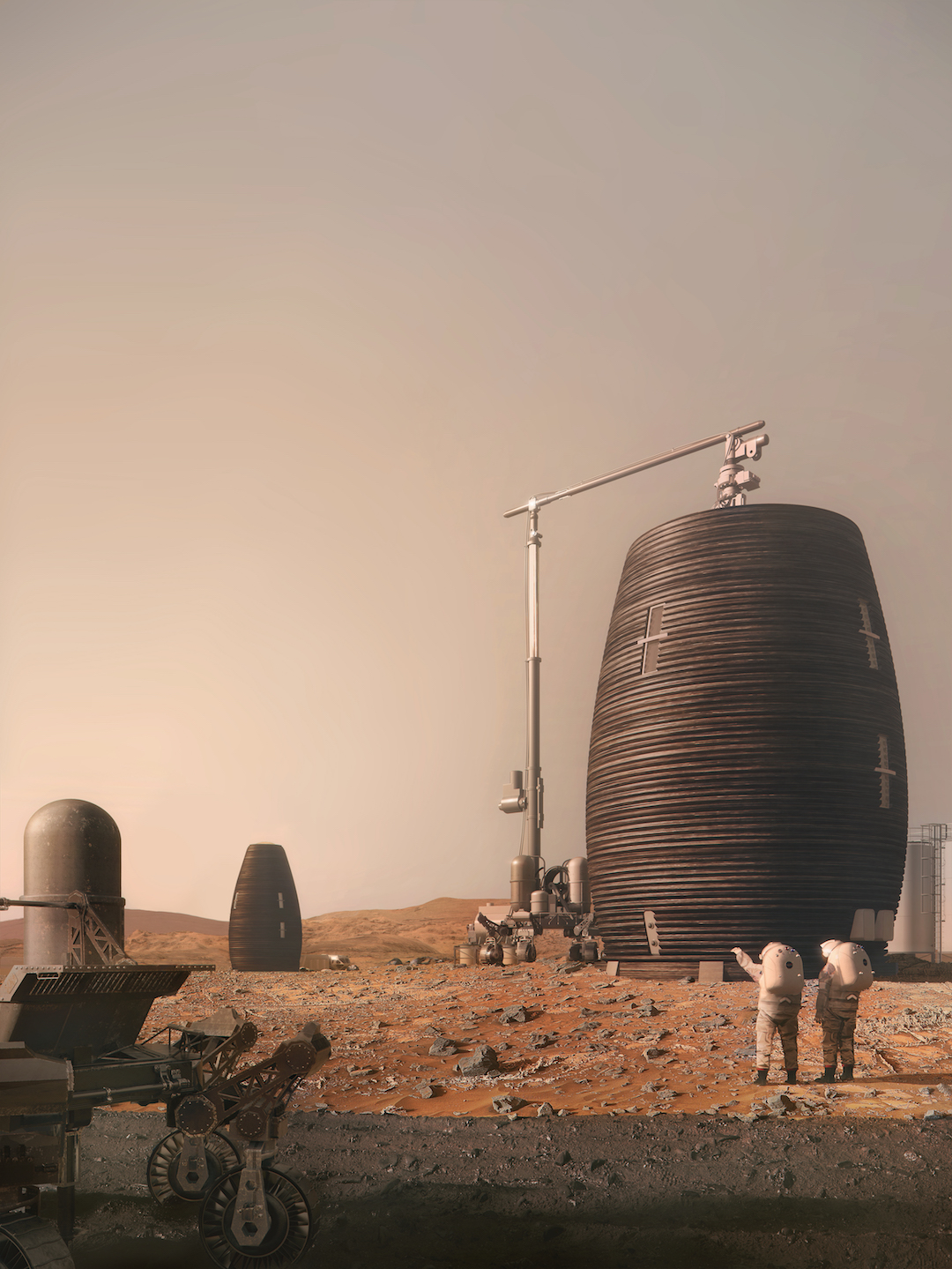 MARSHA construction process. Courtesy AI SpaceFactory.
MARSHA construction process. Courtesy AI SpaceFactory.
3D printing any structure on Mars has its own set of challenges that need to be solved, however. During a 3D print, the material (in MARSHA’s case, the basalt fiber-reinforced PLA) is deposited layer by layer, and if you are printing a larger structure, such as a Martian habitat, there is a large amount of time before a given point is passed over again with another layer of the material. This bond between layers is a “major engineering challenge,” Montes says. Especially when you consider a print such as that which would be required on Mars would need to be paused overnight.
The material will shrink overnight as it hardens and cools in any situation, but the drastic thermal changes on Mars amplify this effect. This is an issue because when the print resumes the following day, where the robot thinks the next layer should be deposited will be incorrect. If the goal is to get to a point where Martian habitats can be built autonomously, the computers and robots in charge of the construction are going to need to be able to self-calibrate.
The other option, however, is to forgo full autonomy for semi-autonomy, where humans and computers are working together to create these habitats, but more on that later.
Gimme Shelter
With so much effort being put towards developing a structure with an exterior that can withstand the rigors of Mars, it can be easy for the interior spaces to fall by the wayside. These spaces, however, are just as important to occupant health and well-being.
“My approach is to design spaces that can be adjustable and multifunctional, especially personal quarters where the crew should be able to modify the space to their liking,” says Bannova. “We don’t know how people will feel once they are already on Mars. The crew may discover that whatever was pre-designed for them on Earth doesn’t really serve them best on Mars and has to be changed.” Going beyond including flexible furniture and physical spatial layouts, the crews’ biometric signals can be used to alter the environment in real time to, say, adjust the temperature based on a given member’s core temperature or adjust the oxygen flow based on pulse oximetry readings.
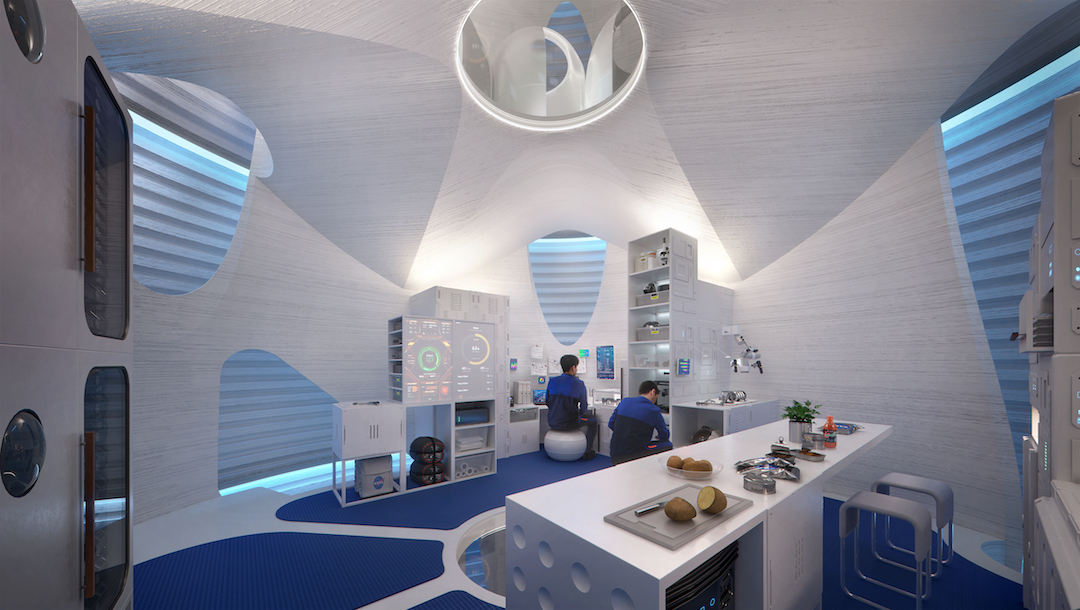 MARSHA interior lab/office space. Courtesy AI SpaceFactory.
MARSHA interior lab/office space. Courtesy AI SpaceFactory.
Another important component highlighted by both Bannova and Montes is the use of real windows to provide the occupants with external viewing opportunities, even if virtual windows are also incorporated. MARSHA incorporates intermittent windows and a large water-filled (to help block radiation) skylight into its double-shell design for both natural light and to ease any feelings of claustrophobia. A circadian lighting system is also included to help recreate Earthly light for the crew.
Additionally, technology will not just help to build these Martian habitats, but it will be a key component integrated into the interior of the habitats. Technology like artificial intelligence, machine learning, virtual and mixed reality, and/or robot assistants will be integrated into these habitats with the ultimate goal of providing a means for effective man-machine interaction. But how smart we want a habitat to be also needs to be taken into consideration to avoid a crew losing the ability to make critical decisions (“I’m sorry Dave, I’m afraid I can’t do that” ring any bells?). “Defining a balance between autonomous systems and crew-controlled operations helps to create an optimized habitat design for crew and mission satisfaction,” Bannova says. In other words, it helps to keep the crew on its toes. “I don’t think full automation is the answer,” Montes agrees. “You have to know when to say ‘We are autonomous enough.’”
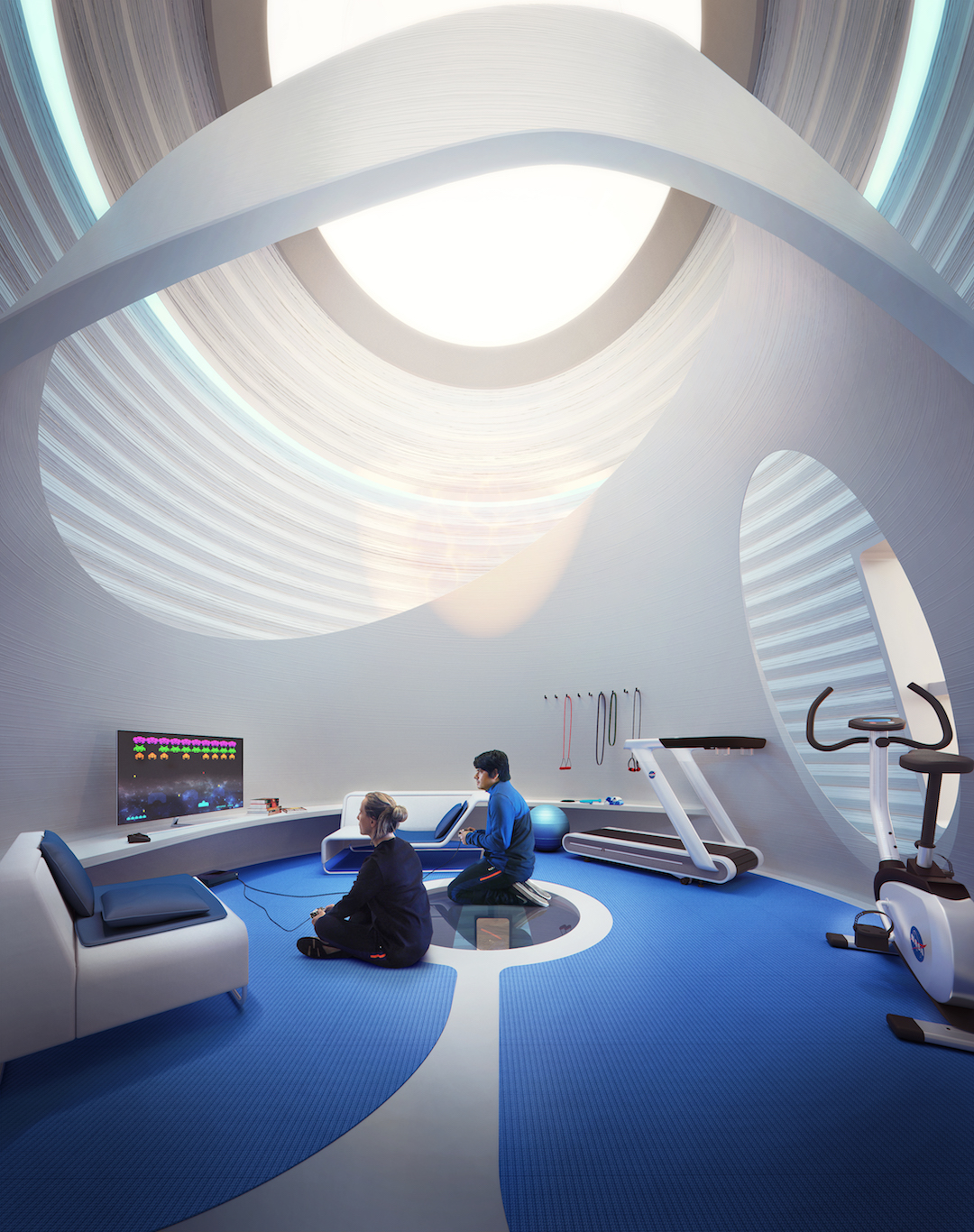 MARSHA recreation space with overhead skylight. Courtesy AI SpaceFactory.
MARSHA recreation space with overhead skylight. Courtesy AI SpaceFactory.
For example, let’s return to the idea of fully autonomous 3D printing. It sounds great in theory, but may actually cause more headaches than it is worth. Using an astronaut to recalibrate the printer after being paused for a night will not only eliminate the need to create a robot that can do this task itself, but it will also keep the astronauts more intimately connected to their surroundings, which means fewer mistakes.
Humans working directly with Martian resources will help us gain a better understanding of the planet and create opportunities to develop new technologies and techniques for creating the Martian architectural language and landscape. Just like here on Earth, it will better allow Martian architecture to evolve and become more attuned with human needs and wants. “That’s what we explore in space architecture,” Bannova says. “We fill the gaps between designing for humans, engineering systems, and the environment.” Once those gaps are filled, the picture for living on Mars really begins to take shape.
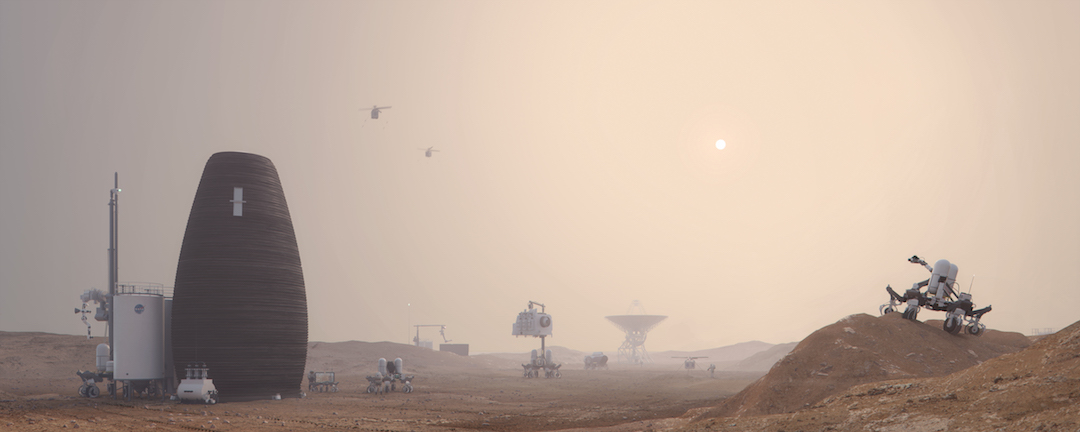 Example of an autonomous robotic ecosystem. Courtesy AI SpaceFactory.
Example of an autonomous robotic ecosystem. Courtesy AI SpaceFactory.
Related Stories
| Feb 11, 2011
Research facility separates but also connects lab spaces
California State University, Northridge, consolidated its graduate and undergraduate biology and mathematics programs into one 90,000-sf research facility. Architect of record Cannon Design worked on the new Chaparral Hall, creating a four-story facility with two distinct spaces that separate research and teaching areas; these are linked by faculty offices to create collaborative spaces. The building houses wet research, teaching, and computational research labs, a 5,000-sf vivarium, classrooms, and administrative offices. A four-story outdoor lobby and plaza and an outdoor staircase provide orientation. A covered walkway links the new facility with the existing science complex. Saiful/Bouquet served as structural engineer, Bard, Rao + Athanas Consulting Engineers served as MEP, and Research Facilities Design was laboratory consultant.
| Feb 11, 2011
A feast of dining options at University of Colorado community center, but hold the buffalo stew
The University of Colorado, Boulder, cooked up something different with its new $84.4 million Center for Community building, whose 900-seat foodservice area consists of 12 micro-restaurants, each with its own food options and décor. Centerbrook Architects of Connecticut collaborated with Denver’s Davis Partnership Architects and foodservice designer Baker Group of Grand Rapids, Mich., on the 323,000-sf facility, which also includes space for a career center, international education, and counseling and psychological services. Exterior walls of rough-hewn, variegated sandstone and a terra cotta roof help the new facility blend with existing campus buildings. Target: LEED Gold.
| Feb 11, 2011
Chicago high-rise mixes condos with classrooms for Art Institute students
The Legacy at Millennium Park is a 72-story, mixed-use complex that rises high above Chicago’s Michigan Avenue. The glass tower, designed by Solomon Cordwell Buenz, is mostly residential, but also includes 41,000 sf of classroom space for the School of the Art Institute of Chicago and another 7,400 sf of retail space. The building’s 355 one-, two-, three-, and four-bedroom condominiums range from 875 sf to 9,300 sf, and there are seven levels of parking. Sky patios on the 15th, 42nd, and 60th floors give owners outdoor access and views of Lake Michigan.
| Feb 11, 2011
Iowa surgery center addresses both inpatient and outpatient care
The 12,000-person community of Carroll, Iowa, has a new $28 million surgery center to provide both inpatient and outpatient care. Minneapolis-based healthcare design firm Horty Elving headed up the four-story, 120,000-sf project for St. Anthony’s Regional Hospital. The center’s layout is based on a circular process flow, and includes four 800-sf operating rooms with poured rubber floors to reduce leg fatigue for surgeons and support staff, two substerile rooms between each pair of operating rooms, and two endoscopy rooms adjacent to the outpatient prep and recovery rooms. Recovery rooms are clustered in groups of four. The large family lounge (left) has expansive windows with views of the countryside, and television monitors that display coded information on patient status so loved ones can follow a patient’s progress.
| Feb 11, 2011
Grocery store anchors shopping center in Miami arts/entertainment district
18Biscayne is a 57,200-sf urban retail center being developed in downtown Miami by commercial real estate firm Stiles. Construction on the three-story center is being fast-tracked for completion in early 2012. The project is anchored by a 49,200-sf Publix market with bakery, pharmacy, and café with outdoor seating. An additional 8,000 sf of retail space will front Biscayne Boulevard. The complex is in close proximity to the Adrienne Arsht Center for the Performing Arts, the downtown Miami entertainment district, and the Omni neighborhood, one of the city’s fast-growing residential areas.
| Feb 11, 2011
Chicago architecture firm planning one of China’s tallest towers
Chicago-based Goettsch Partners was commissioned by developer Guangzhou R&F Properties Co. Ltd. to design a new 294,570-sm mixed-use tower in Tianjin, China. The Tianjin R&F Guangdong Tower will be located within the city’s newly planned business district, and at 439 meters it will be one of China’s tallest buildings. The massive complex will feature 134,900 sm of Class A office space, a 400-key, five-star hotel, 55 condominiums, and 8,550 sm of retail space. The architects are designing the tower with multi-story atriums and a high-performance curtain wall to bring daylight deep into the building, thereby creating deeper lease spans. The project is currently finishing design.
| Feb 11, 2011
Two projects seek to reinvigorate Los Angeles County medical center
HMC Architects designed two new buildings for the Los Angeles County Martin Luther King, Jr., Medical Center as part of a $360 million plan to reinvigorate the campus. The buildings include a 120-bed hospital, which involves renovation of an existing tower and several support buildings, and the construction of a new multi-service ambulatory care center. The new facilities will have large expanses of glass at all waiting and public areas for unobstructed views of downtown Los Angeles. A curved glass entrance canopy will unite the two buildings. When both projects are completed—the hospital in 2012 and the ambulatory care center in 2013—the campus will have added more than 460,000 sf of space. The hospital will seek LEED certification, while the ambulatory care center is targeting LEED Silver.
| Feb 11, 2011
Sustainable community center to serve Angelinos in need
Harbor Interfaith Services, a nonprofit serving the homeless and working poor in the Harbor Area and South Bay communities of Los Angeles, engaged Withee Malcolm Architects to design a new 15,000-sf family resource center. The architects, who are working pro bono for the initial phase, created a family-centered design that consolidates all programs into a single building. The new three-story space will house a resource center, food pantry, nursery and pre-school, and administrative offices, plus indoor and outdoor play spaces and underground parking. The building’s scale and setbacks will help it blend with its residential neighbors, while its low-flow fixtures, low-VOC and recycled materials, and energy-efficient mechanical equipment and appliances will help it earn LEED certification.
| Feb 11, 2011
Texas megachurch inspired by yesteryear’s materials, today’s design vocabulary
The third phase of The First Baptist Church of Pasadena, Texas, involves construction of a new 115,000-sf worship center addition. Currently in design by Zeigler Cooper, the project will include a 2,500-seat worship center (with circular layout and space for a 50-person orchestra and 200-person choir), a 500-seat chapel (for weddings, funerals, and special events), and a prayer room. The addition will connect to the existing church and create a Christian Commons for education, administration, music, and fellowship. The church asked for a modern design that uses traditional materials, such as stone, brick, and stained glass. Construction is scheduled to begin this summer.
| Feb 11, 2011
Apartment complex caters to University of Minnesota students
Twin Cities firm Elness Swenson Graham Architects designed the new Stadium Village Flats, in the University of Minnesota’s East Bank Campus, with students in mind. The $30 million, six-story residential/retail complex will include 120 furnished apartments with fitness rooms and lounges on each floor. More than 5,000 sf of first-floor retail space and two levels of below-ground parking will complete the complex. Opus AE Group Inc., based in Minneapolis, will provide structural engineering services.


